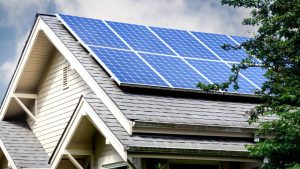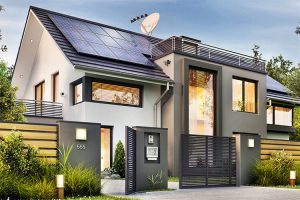Virtual Power Plants Systems
When it comes to powering homes, utility companies need reliable sources. The use of virtual power plants is becoming more popular. By integrating several types of power sources, virtual power plants are allowing utility companies to generate electricity using renewable energy sources. This energy is then stored in battery banks and supplied to customers. These virtual power plant systems ensure customers have a reliable source of energy while not putting an extra strain on their wallets.
What are Virtual Power Plants?
Virtual Power Plants, or VPPs, are cloud-based data control centers that aggregate production data from various distributed energy resources, or DERs. In other words, a virtual power plant works remotely to combine several independent energy resources into a network that provides reliable power. VPPs integrate power sources such as solar, wind, small hydro and batteries.
New York City’s ConEd is beginning to develop a virtual power plant system. ConEd is eager to join the virtual trend because it allows them to avoid outages and assist during peak periods of usage. By using a VPP system, ConEd can pull cheaper energy from storage and send it back to the grid. This also allows ConEd to respond to real-time events like the need for voltage support.
How do VPPs Work?
The goal of virtual power plants is to relieve the load on the grid by smartly distributing the power generated by the individual units during periods of peak load. The participants of the virtual power plant are connected to the VPPs central control system by a remote-control unit. Control demands and data are then transmitted by secured data connections.
Peak demand occurs only a percentage of the time. Traditionally, utility companies build load shedding or generation plants to help during peak demand. However, these plants are rarely used and come with a significant cost to the utility companies and their customers.
VPPs can coordinate and control more efficiently. In turn, there is no need to overbuild or fire up wasteful fossil fuel plants to balance demand and supply. And there are no extra costs to consumers. VPPs use a special algorithm to adjust commands from transmission system operators. The data exchange between individual plants and VPPs enables the transmission of commands from the VPP’s control system as well as provide real-time data on networked units.
The Benefits of VPPs
Generating extra energy from your solar panels is common. While you can store this extra energy in solar batteries, the extra energy often goes unused. VPPs can distribute this extra energy to neighbors to more efficiently utilize the power generated. VPPs can also enhance grid reliability and solve flexibility problems in solar energy demand and supply. This allows for real-time energy control on the grid.
Virtual Power Plants can also lower grid consumption and cost. This will result in less reliance and strain on the grid during periods of high demand. A report done by the Rocky Mountain Institute studied the outcomes if thermal plants, like coal and nuclear plants, were replaced by natural gas or VPP plants. If replaced by new natural gas plants, the net present value of the required gas capacity was estimated at $700 billion. However, if half was invested in VPPs, it would yield a 2 to 5% cost savings, creating a $350 billion market, including $100 billion for Distributed Energy Resources (DERs).
—
We want to utilize reliable energy sources. Virtual power plants collect data in real-time. Pairing solar panels with VPPs can ensure all the energy your solar panels create is being used. If you’re ready to help the environment and switch to solar energy in your home, call Surf Clean Energy today at (866) 631-7873.
You may also like to read more about What is Solar Energy and How Do Solar Panels Work?




